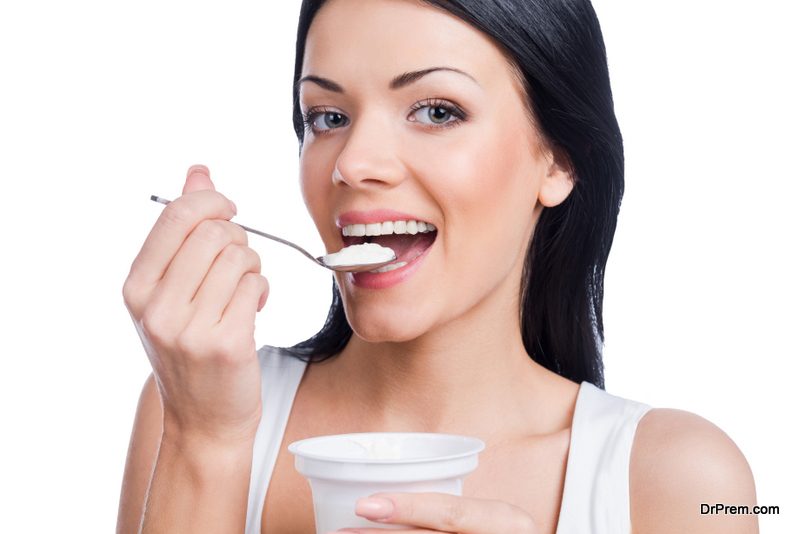One of the keys to good health is eating a balanced diet where the body is given the right amount of nutrients it needs to function properly. A body that is nourished properly is healthy and away from sickness and diseases. There is not one way to become perfectly healthy but eating a balanced meal is one of the biggest contributors to it. This means eating the right foods in the right amount at the right time. If you want to know more about what having a balanced diet means, here are 3 concepts you should know about. We’ll tackle what constitutes a healthy meal, what are Probiotics and how can they help, and how much calories you should eat in a day.
1. Getting a balanced diet
 Getting a balanced diet may sound intimidating at first, but once you get used to choosing the right types of foods, it will be easier to maintain it as a nutritious one. In essence, majority of your calorie intake should come from a variety of healthy picks, such as fresh fruits and vegetables, whole grains, nuts, legumes, and lean proteins.
Getting a balanced diet may sound intimidating at first, but once you get used to choosing the right types of foods, it will be easier to maintain it as a nutritious one. In essence, majority of your calorie intake should come from a variety of healthy picks, such as fresh fruits and vegetables, whole grains, nuts, legumes, and lean proteins.
Foods that are low in fats and sugars yet high in essential nutrients, vitamins, and minerals are what you want to pick on your next grocery shopping. When it comes to eating fruits, you don’t have to pick the fanciest ones, just get those that are in season as they’re more fresh and provide a lot of nutrients too. Fruits also make for good snacks so instead of reaching for chips, you can munch on apples, melons, or avocadoes instead.
For your vegetable intake, ideally you should go for the dark and leafy greens as they’re the most nutritious and be taken at every meal. Not all vegetables offer the same nutrients so it’s good to eat a variety as well. Some great examples of healthy dark leafy greens are kale, spinach, broccoli, and green beans.
If you can manage it, chose whole grains over refined grains. This means cutting down on white rice, pasta, white bread, or anything that is made from refined white flour. Why is this? According to the USDA, refined flour has very poor nutritional value because the outer shell of the grain where the primary nutrition lies, is polished off during the refining process. In contrast, whole grains are made from the entire grain including the hull (outer shell) so the nutrients are preserved in the products. If you want to improve the quality of carbohydrates you intake, gradually switch from white breads to whole-grain products.
Apart from fruits, vegetables, and whole grain products, you need to take proteins too as they’re essential for muscle and brain development. Meats and beans should be your primary source of proteins. Choose those that are lean and have low fat content such as chicken or fish. Certain cuts of beef and pork are also good options.
To cap off your balanced food choices, don’t forget to eat some dairy and oils too. Oils should be taken sparingly, and if you can afford it, opt for the good oils instead such as olive oil or lauric oil. When it comes to dairy products, they’re a major source of fat so it’s advisable to choose the low-fat or fat-free kinds. If you can, plant-based dairy products like those made from soy, almonds, or flaxseed are great alternatives to cow dairy.
2. Healthy calorie intake
 The number of calories you take indicates the amount of energy stored in that food. This energy is what your body needs to fuel its daily activities. Not getting the right amount of calories can weaken your body, and make you unproductive. Getting too much empty calories on the other hand could lead to weight gain and chronic diseases such as heart attack, stroke, and diabetes.
The number of calories you take indicates the amount of energy stored in that food. This energy is what your body needs to fuel its daily activities. Not getting the right amount of calories can weaken your body, and make you unproductive. Getting too much empty calories on the other hand could lead to weight gain and chronic diseases such as heart attack, stroke, and diabetes.
Based on the USDA guidelines, here are some examples of suggested calorie intake depending on your sex and age group:
For children up to 8 years old, 1000 to 1400 calories is recommended. For teenage girls, it’s 1400 to 1600. Teenage boys need 1600 to 2000 calories. For women aged 14 to 30 years old, 1800 to 2000 is advised. Men of the same age group on the other hand need 2000 to 2600.
If you want to maintain a balanced diet, you should avoid foods that are rich in empty calories. Some examples are bacon, sausages, cakes, cookies, doughnuts, fruit drinks, and ice cream. They make you full and do give you energy, but they contain very little to no nutrients and will make you hungry faster. Overall you want to choose foods that are nutrient rich to maintain a healthy weight and get protection from diseases.
3. Probiotics for good health
 Probiotics are foods or food supplements that contain live microorganisms intended to improve the amount of good bacteria in the stomach. They have tons of health benefits and are great for improving the digestive health. So what are some great sources of probiotics?
Probiotics are foods or food supplements that contain live microorganisms intended to improve the amount of good bacteria in the stomach. They have tons of health benefits and are great for improving the digestive health. So what are some great sources of probiotics?
Some of the healthiest sources of Probiotics are yogurt, kefir, sauerkraut, and Japanese miso.
Yogurt is made from milk fermented in lactic acid bacteria and bifidobacteria. It’s good for the bones and beneficial in regulating high blood pressure as well. Kefir is another fermented drink and is made by adding kefir grains to goat milk or cow milk. These grains are lactic acid bacteria cultures that help the stomach with digestive problems and also offer protection from infections. Sauerkraut is fermented shredded cabbage. It’s usually used as a side dish and has a sour and salty taste. It’s rich in fiber, vitamins B, C, and K, and also contains antioxidants that are good for the eye.
Japanese miso is basically salt and koji fermented soybeans. It can also be produced with other ingredients such as rye, rice, or barley. The paste is popularly used in miso soup and is great for breakfast. It’s usually salty, and comes in white, yellow, red, and brown varieties. Miso is an excellent source of protein and fiber. It’s also high in several vitamins and minerals and helps lower the risk of breast cancer, at least in the study concerning middle-aged Japanese women.
Article Submitted By Community Writer




